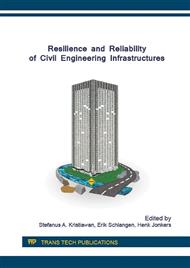p.359
p.364
p.369
p.379
p.385
p.394
p.404
p.408
p.416
The Application of Traffic Conflict Technique as a Road Safety Evaluation Method: A Case Study of Hasselt Intersection
Abstract:
The majority of traffic safety evaluations in the world generally have been conducted by colecting historical accident data. The data will then being analyzed using risk prediction models or before-after study that required an exact and reliable data. Meanwhile, the availability of accident data is rare where the rest actually consist of near-crashes and abnormal behaviour, which is mostly underreporting and lack of detail concerning the behavioural and situational of the event. Therefore, traffic conflict technique, is needed to assess traffic safety as another approach rather than waiting for several years until a number of accidents happen in a certain area. Hence the aim of this study is to make a safety evaluation towards a specific intersection in Hasselt Belgium using traffic conflict technique. The observation of conflict (near crashes) was carried out in intersection of Manteliusstraat – Dorpsstraat – Thonissenlaan in the Hasselt, Belgium. In order to differentiate slight conflict and serious conflict, the TA-value (Time of accident) was defined based on the estimated speed of the road user and estimated distance from the road user when conflict occurred. From the observation, it was found that the conflicts between car and pedestrian were the most frequent conflict, with 50% of the total conflict, and that the conflict between car with car and the conflict between car with cyclist were high in terms of severity level based on the TA-value. By taking these into consideration, it can be concluded that unsafe crossing for pedestrian and cyclist, different speed, and peak hour traffic were the causes of conflict. Therefore, it was concluded that traffic conflict technique can be used to assess and measure traffic safety in a certain road segment. Furthermore, in term of safety, the Manteliusstraat – Dorpsstraat – Thonissenlaan intersection should be modified with some alternatives; signalized intersection with toucan crossing and traffic control devices improvement
Info:
Periodical:
Pages:
394-403
Citation:
Online since:
July 2016
Authors:
Keywords:
Price:
Сopyright:
© 2016 Trans Tech Publications Ltd. All Rights Reserved
Share:
Citation:


